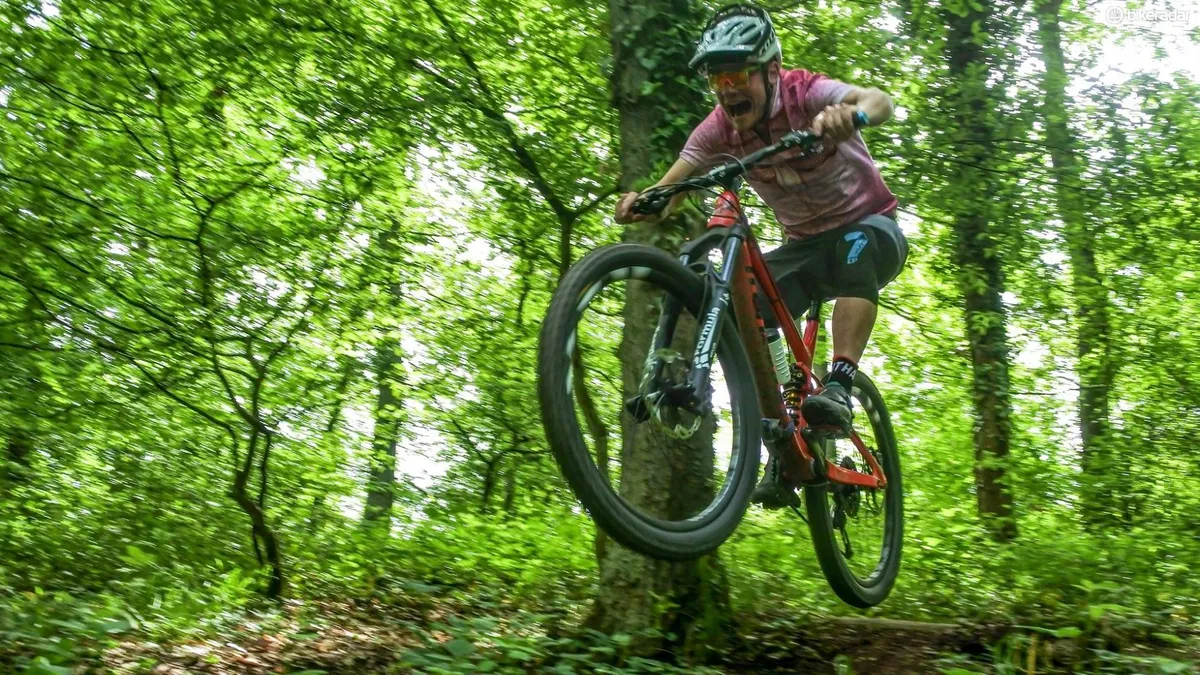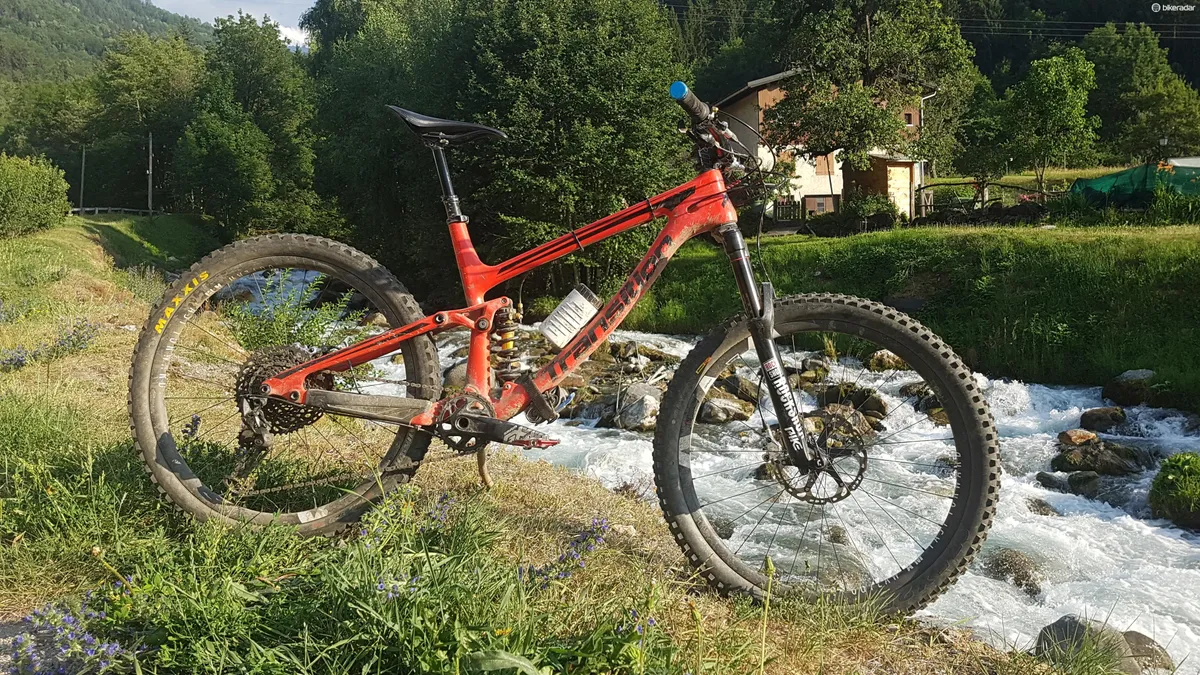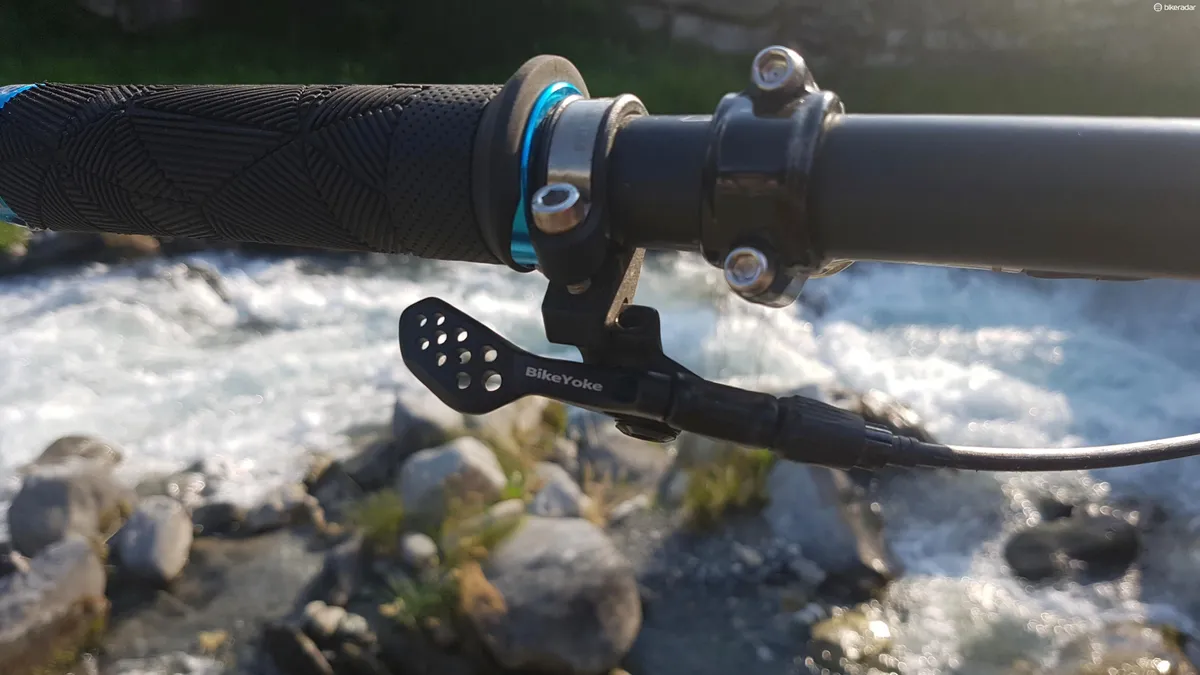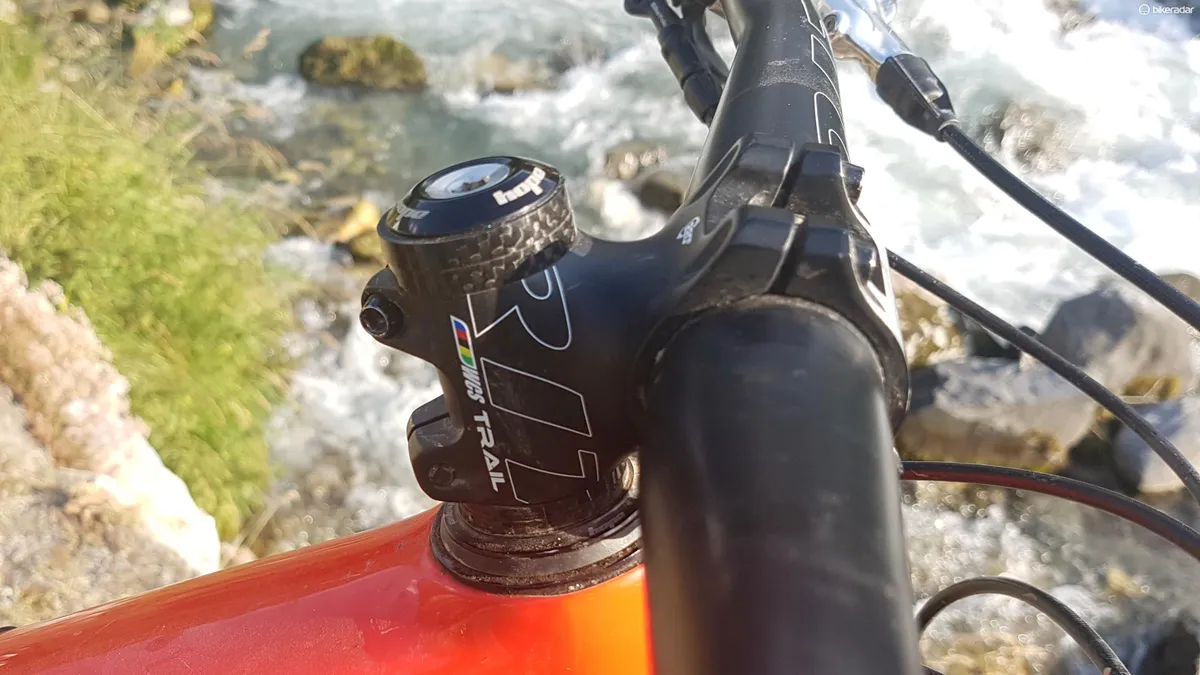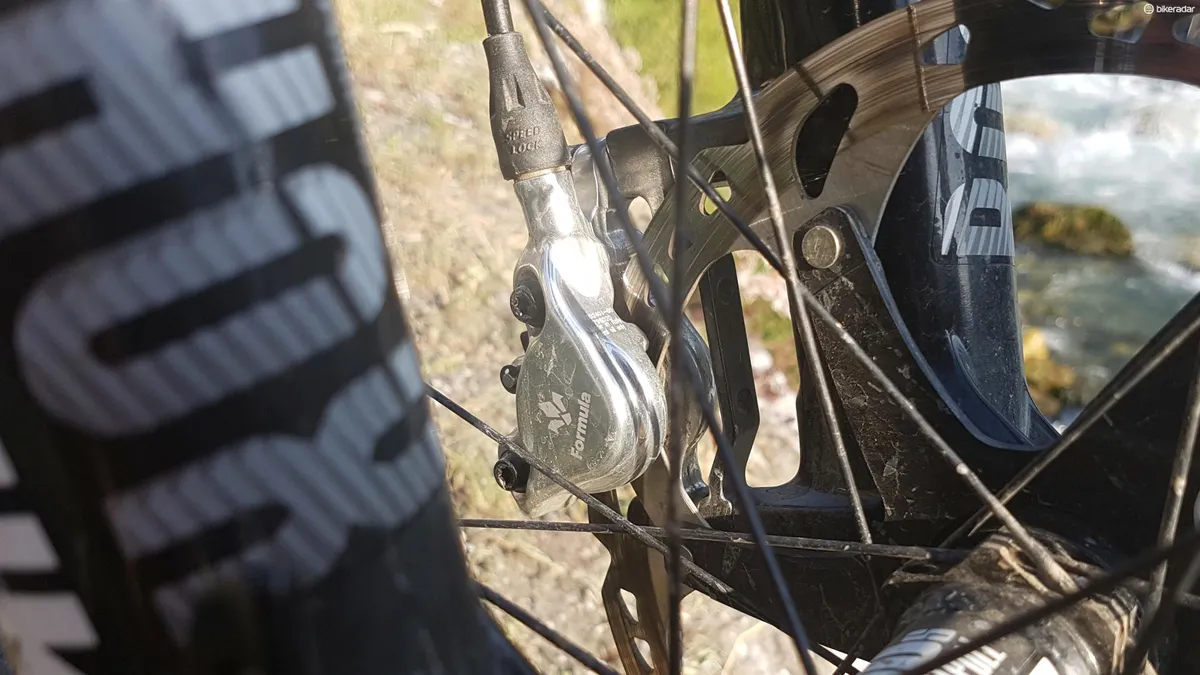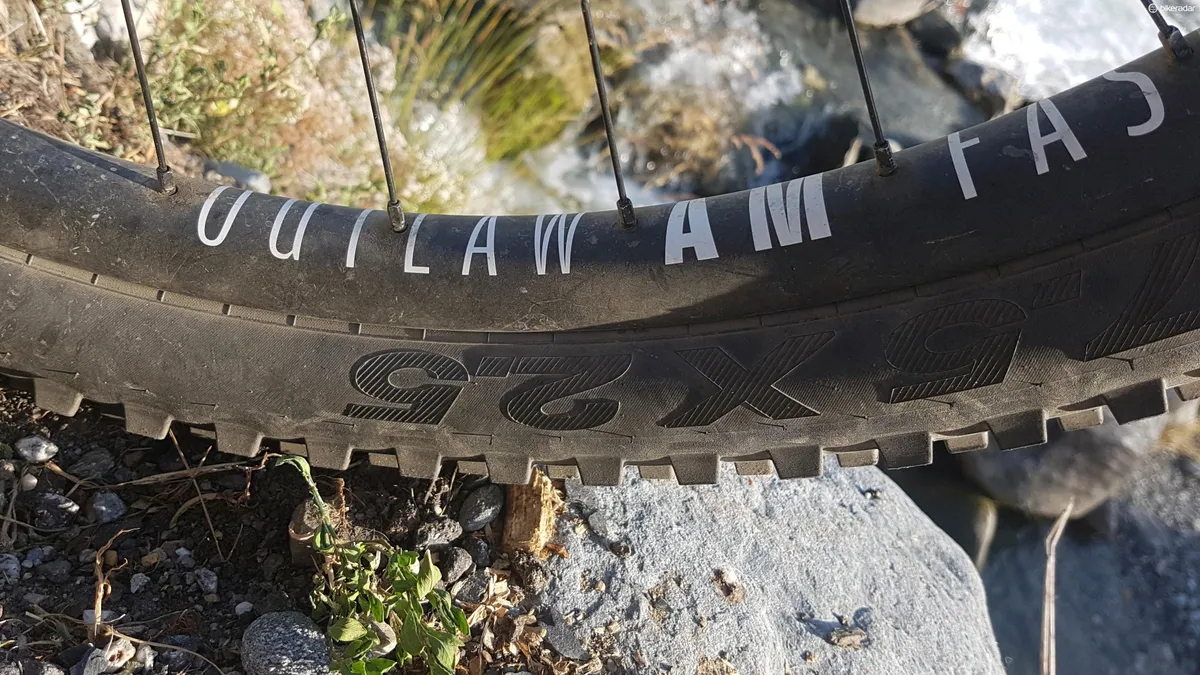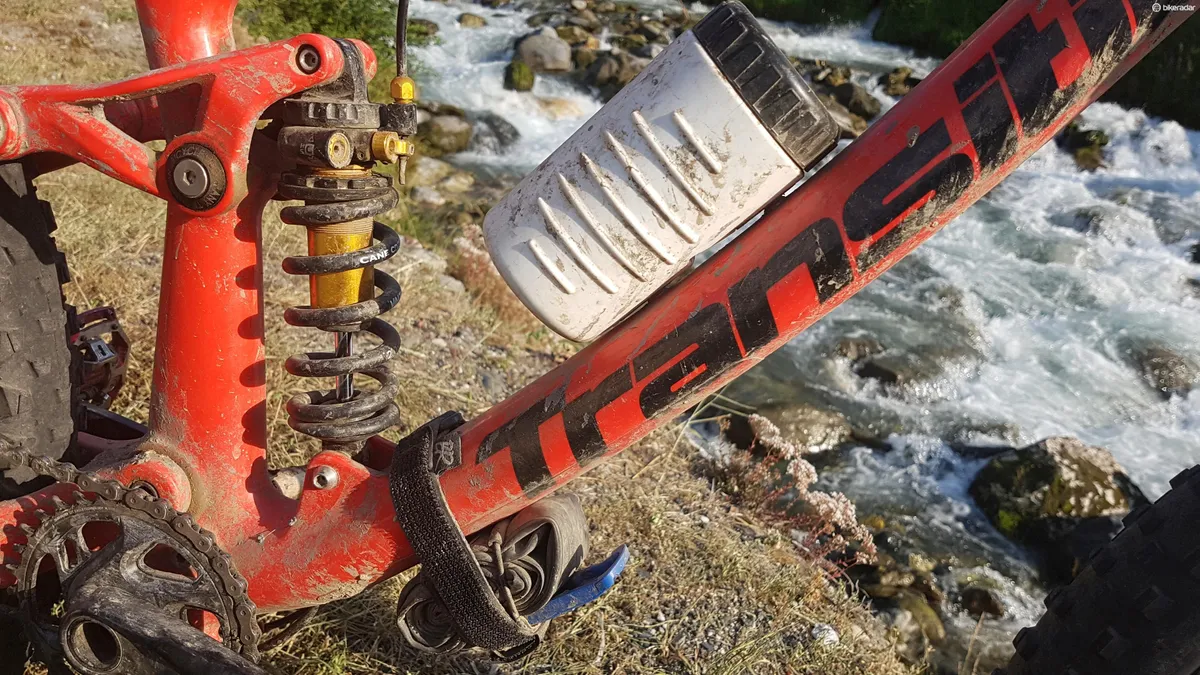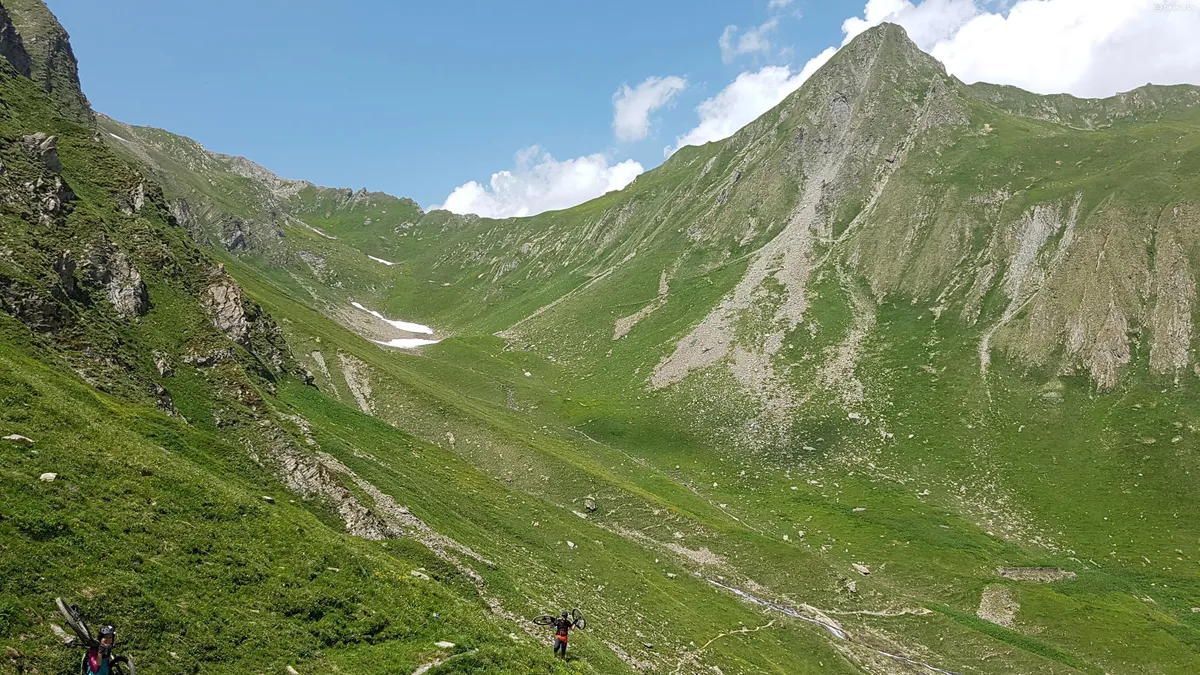Right, I'm going to have a rant about the bike industry, and it's borne out of my struggles to fit a new dropper post.
Basically, it feels like products are designed to work, and be fitted, in a sterile lab with a perfect set of tools, a clean bike, bucket-loads of experience/knowledge in that precise product, tiny fingers and, most likely, Enya on the radio.
I love riding bikes, but undoubtedly fixing bikes is a chore rather than something to be enjoyed. But I've been working on bikes since I was 12 (18 years ago), and as much as I'm a bit clumsy, I know what I'm doing — although I'm never going to spanner for a World Cup DH team nor will Team Sky ever employ me to even clean their bikes.
So why has it taken me, and our workshop manager who's well trained in bike mechanics, an hour to get a new dropper fitted and it still only works to about 90 percent of its performance?
I put it down to two things: T.I.T.S. and tight tolerances.
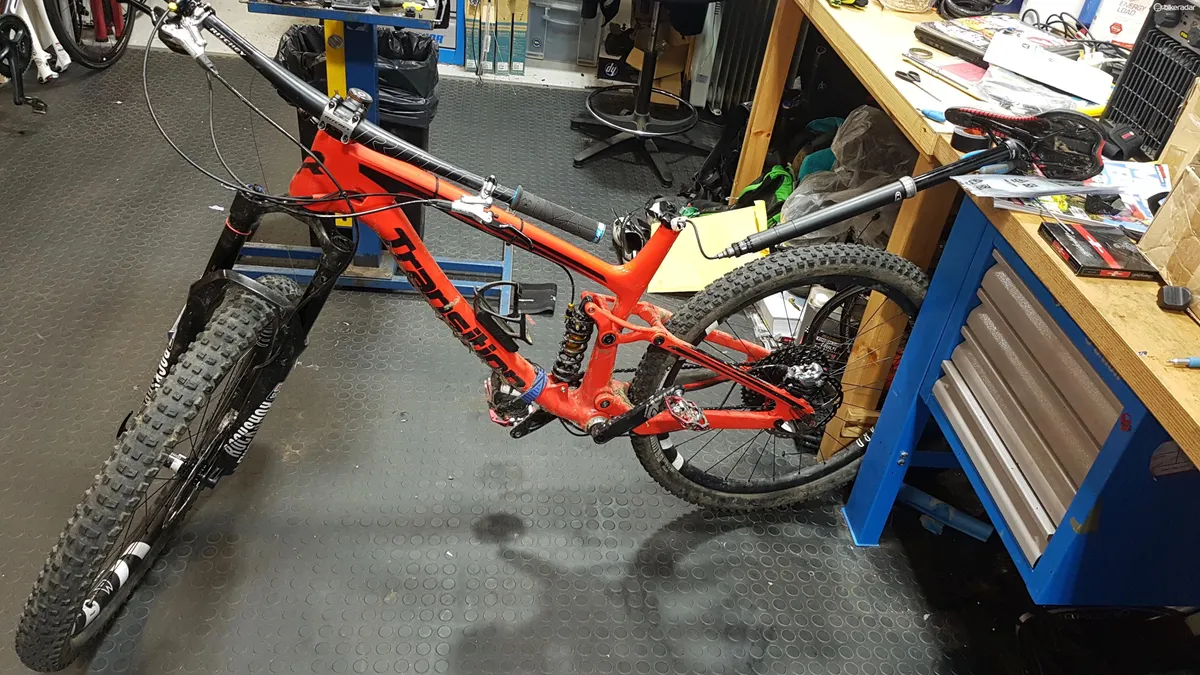
Transition's 'Tubes In Tubes System' (T.I.T.S ) has, as the name suggests, little tubes inside the mainframe through which you thread internally-routed cables — such as brakes, gears and droppers. However, it seems that the T.I.T for the dropper goes the length of the down tube, then basically stops around the bottom bracket without guiding your new outer up the seat tube, past the main pivot, and then past the rocker pivot.
This makes the outers run relatively stiff, which means in order to locate the inner cable when the end is poking out of the top of the seat tube, and then push and pull it back through the frame with the dropper now attached, it's likely that the outer will come unseated from the base of the post. This then necessitates a total re-set of the system and also makes putting a fresh cable in a right royal PITA.
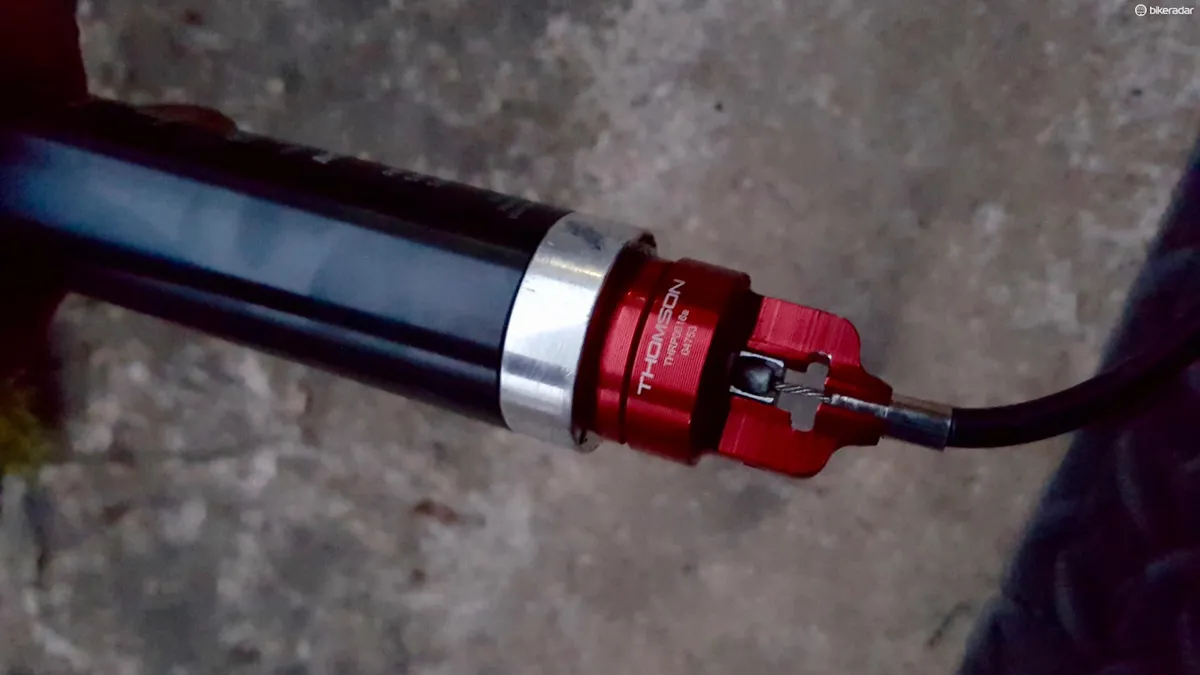
Also, and this is something not confined to seat posts, if a system relies on cable tension being pretty much spot on for it to work perfectly it's not got a place on a mountain bike.
Mountain bikes get knocked around, mud splatters all over them, there's the aforementioned complicated cable routing and, of course, grit gets into places it shouldn't.

Unless you're a dab hand at the spanners, I'll guarantee that virtually any mountain biker has, at some point, struggled unnecessarily to get a dropper, or mech, or brake to function perfectly.
In virtually every product there's a safety tolerance built in. For example, a chair rated for someone who weighs 100kg will probably survive if someone at 120kg sits on it. So I propose that the bike industry builds in a Cable Tension Imperfection Tolerance (C.T.I.T. for short) for those times when someone with tiny fingers, bucket-loads of experience, a clinically clean, perfectly stocked workshop and a whole Enya Spotify playlist isn't on hand. Maybe then I'll start to enjoy working on bikes.
To calm me down
Previous post 11 August 2017
The past month has been a busy one with plenty of trips away on launches (such as Lapierre's new Shimano and Bosch e-bikes!), so the Transition has spent a fair bit of time sat in the garage, sadly. However, since the bike was built I've managed to spend time riding the new RockShox Pike, both on the Transition, and on a number of other test bikes.
If you're wondering how I got on, take a peek at my first ride impressions in the video further down the article.
Given that the Scout hasn't had many outings this month, very little has changed on the bike so far. I have, however, swapped the Maxxis Tomahawk tyre for a Bontrager SE4.
The Tomahawk was pretty knackered after my week in the Alps and I wanted a touch more tread after an incredibly slippy ride at Staunton in the Forest of Dean.
I've also just got my hands on a DT Swiss RWS Syncros X12 compatible axle for the back end — no longer will I be searching for a hex key to remove the rear wheel.
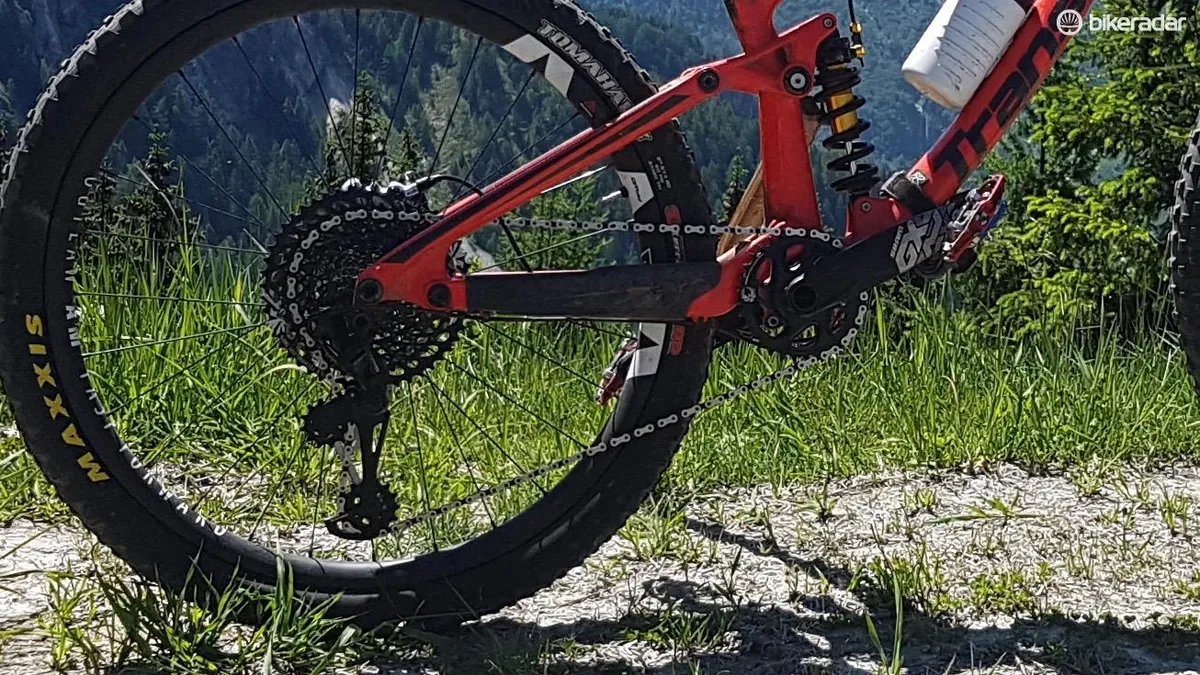
Finally, I found after my holiday earlier this month that the SRAM GX Eagle drivetrain had lost a lot of its smoothness. The chain was jumping on the cassette and I struggled to get it to run smoothly.
I've identified that on my set up the chain may well have been the cause of the issues. Temporarily I've swapped it for a XX1 chain, which is running perfectly, but SRAM has a fresh GX Eagle chain on its way. After speaking to a number of other people running GX Eagle I seem to have been the only one to encounter this issue so far, so I'll pen it down to bad luck rather than an endemic issue.
2018 RockShox Pike first ride video
Video review of the 2018 RockShox Pike RCT3
Original post 10 July 2017
We’re meant to be precise and concise here on BikeRadar — our reviews are built around objectivity and honesty, as well as detailed analysis of what it is we’re riding and/or testing. So I’ll start by being objective and honest. The Scout doesn’t make sense, and it’s pretty darn expensive.
It’s a 125mm travel trail bike which isn’t competitive on the climbs and is lacking in travel when things get rowdy on the way back down. Its pricing pitches it against the likes of Santa Cruz, yet it doesn’t have the same commercial and professional background that Santa Cruz might use to justify its prices.
In fact, Transition itself almost seems to poke fun at how ‘professional’ the bike industry has become.
- This review is part of our new long-term test format on BikeRadar, where staffers like me will be introducing the bikes we're spending time on over the next few months. We’ve already seen Jack's Bianchi Methanol, Oli’s Norco Search Alloy, Ed’s Kona Operator DL and Joe's Fuji SL 1.5. Be sure to keep checking back here for regular updates.
Job done — let's get on to why I love this bike
In short, it’s the most involving, fun, white knuckle ride you can imagine. With a recommended 140mm of travel up front you’ve just enough to get the bike rolling to warp speed before you remember that the back has only a few millimetres more than bikes you’d see on the XC course.
It batters its way along the trail, slapping through turns and hoicking you over roots and jumps. Set the rear suspension up just so and it’s the perfect mix between poppy fun and frolics, and trail taming competence. I’m yet to come back from a ride without a massive grin.
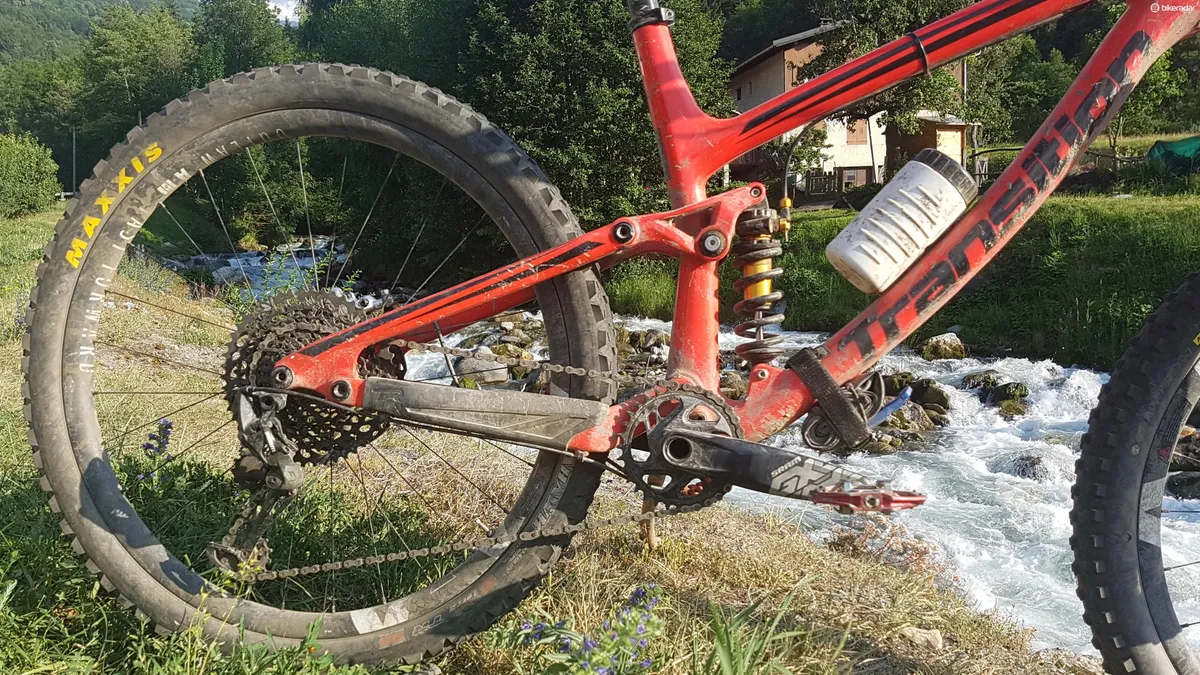
Over the coming months I’m sure I’ll delve back in to the ride, how it performs and the problems I’ve had, but to start I’ll quickly go through the build on the bike.
While Transition offers a number of full builds, I went frame-only, in order to create a test bed for the range of trail components I test.
Suspension
The frame comes stock with a RockShox Monarch RT3 Debonair, a pretty standard air shock for a trail bike. I ran this for a while, but the chance came to sling on Cane Creek’s new trail orientated Coil InLine shock, so I did.
It added a bit of weight, but (in theory) added small bump sensitivity and mid-stroke support. I’ve added the OPT on-bar lockout lever too, to make the bike a little friendlier on longer drags and loose, steep climbs.
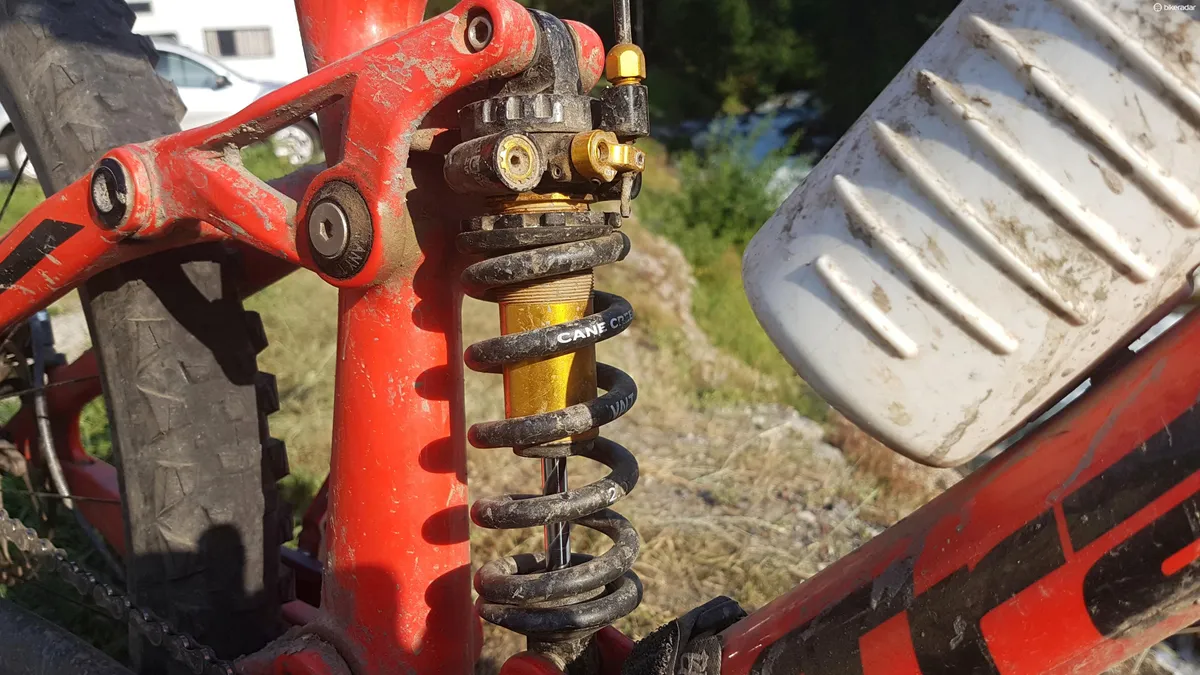
Traditionally, a lockout at the back doesn't help bikes climb loose stuff, however the Climb Switch on the Coil InLine merely slows the compression and rebound, allowing the shock to remain composed through pedal inputs, but still deal with the minutiae of the trail that can compromise traction.
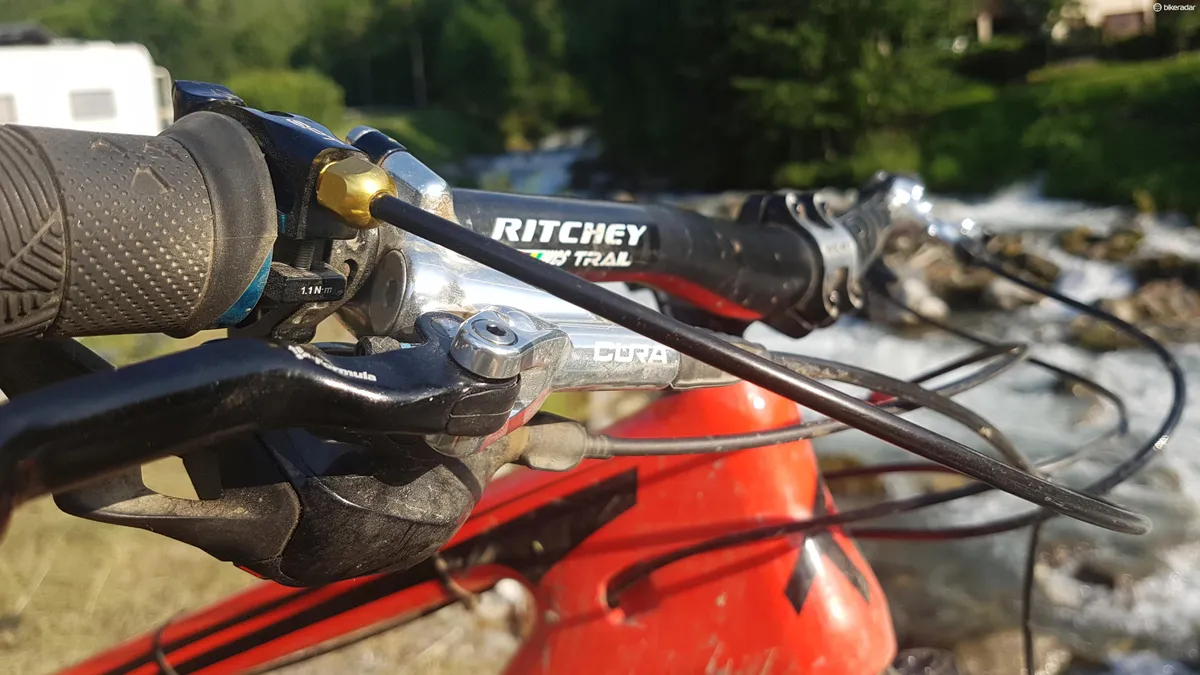
I’ve just fitted a 150mm 2018 RockShox Pike, which landed in the BikeRadar office this week. With a new chassis, air spring and damper, it’ll likely set the trail-bike benchmark, so I’m pretty chuffed to have it on my bike so early on.
Initial set-up has been fairly easy, although coming from the previous generation Pike, I was surprised to be dropping a good few PSI from the air spring — it seems that the new air spring architecture requires lower pressures.
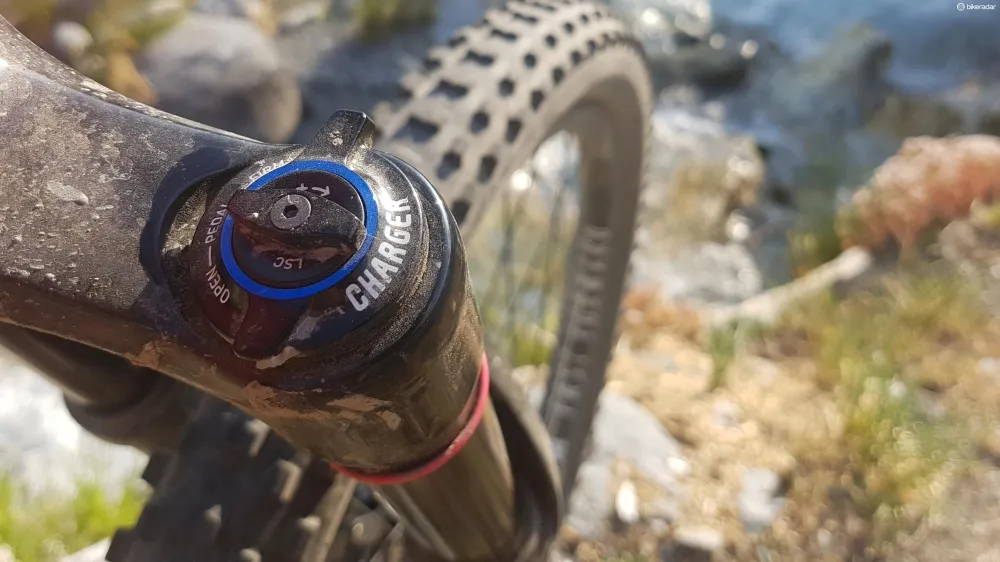
Stop and go
Keeping it SRAM for now, I’ve also got my mitts on the new GX Eagle groupset. It was boxfresh when I fitted it, but the day after building the bike I took it away to the Alps for a week with BikeVillage.
I was pretty happy to have that massive 50t cassette combined with the 32t ring, however in the UK I'm looking at upping the chainring size. A note on setting it up, it proved tricky to get it running really smooth, definitely trickier than 10- or 11-speed kit.
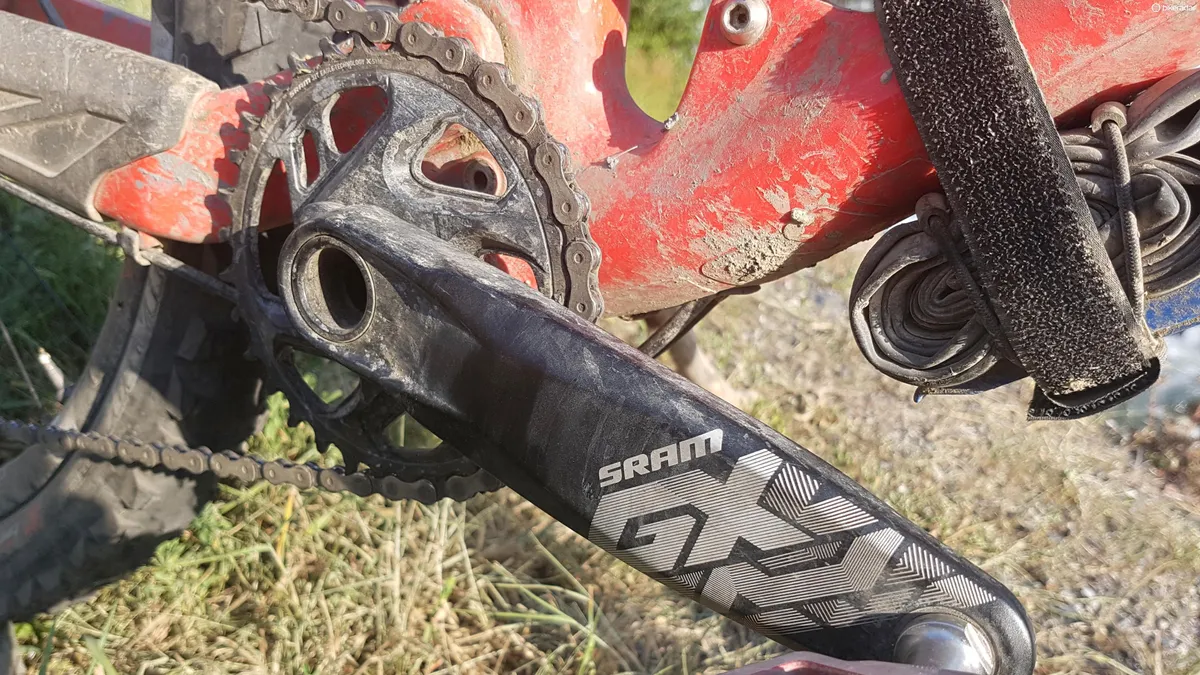
Bringing the whole shebang to an eye-popping stop, hopefully, is a pair of Formula Cura brakes. They’ve done time on World Cup DH bikes, so I’m confident the power will be there. Time will tell whether they’re reliable though.
Wheels
With the new Boost Pike fork, I realised I needed new hoops, and it just so happened that Fast Forward had its new Outlaw AMs available — handy, huh?
The only tricky bit is that wheels come as a pair, and rarely split non-Boost and Boost, fortunately FFWD sorted me out with a mis-matched pair, as while the Pike is Boost, the frame is not.
They’re pretty deep, and nice and wide. I’m running them with a Mavic Claw XL in mahoosive 2.5” width up front and a 2.3” Maxxis Tomahawk out back. It’s got the Double Down casing, which is fairly chunky, but previous experience of the Scout suggests that the rear wheel will take a pummelling, so I’m keen for something stout out back.
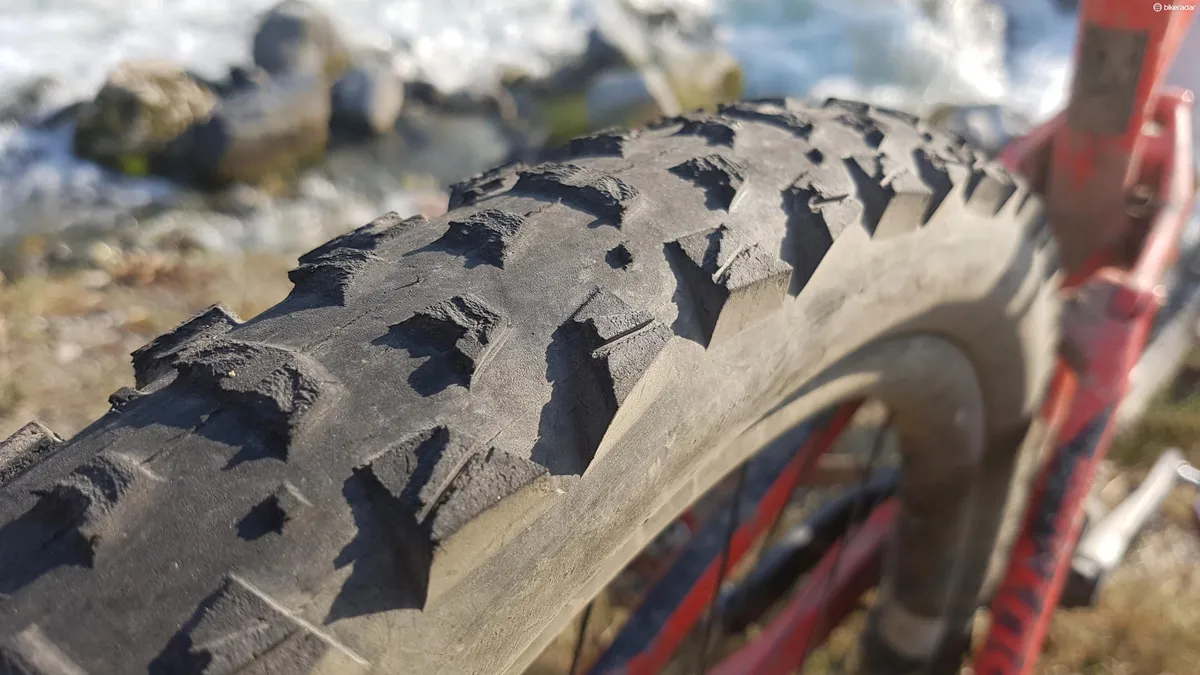
Finishing kit
A Ritchey bar and stem combo isn’t often seen, but I’ve gone for the Trail WCS stuff — 780mm wide and 35mm long. I’ve paired this with the softer of the two compounds on offer from Nukeproof for its Horizon grips.
The Bikeyoke Revive dropper is new to the scene, but the Fabric ALM saddle has been around a while.
I’m a fan of Nukeproof’s Horizon CS pedal, and it almost matches the paint job, so they’re staying put.
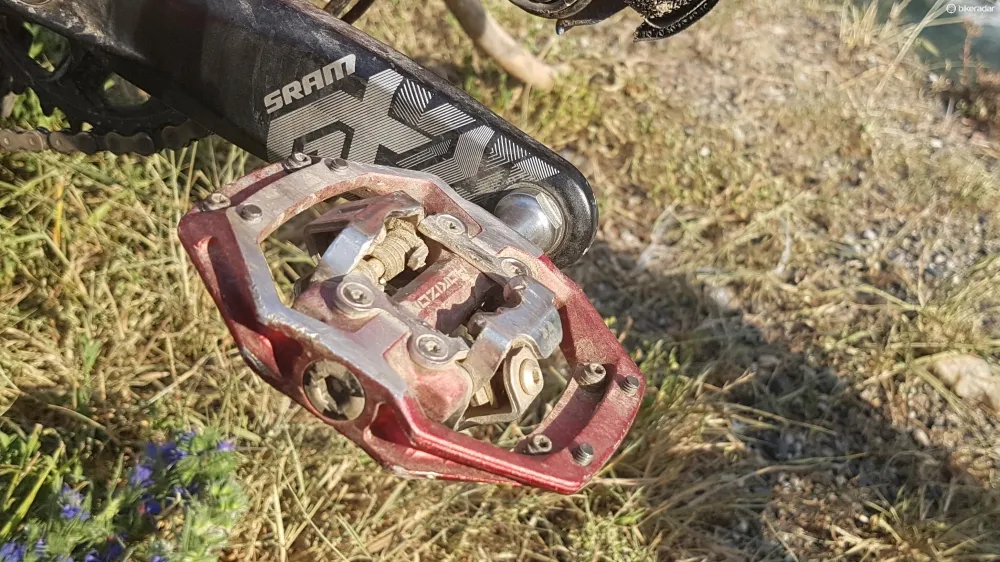
Watch this space as I ride the bike more and see what’s working and what’s not.
Tom's Scout Carbon frameset longterm specification
- Frame: Transition Scout Carbon, Large
- Fork: RockShox Pike RCT3
- Crankset: SRAM GX Eagle
- Rear derailleur: SRAM GX Eagle
- Shifters: SRAM GX Eagle
- Cassette: SRAM GX Eagle 10-50t
- Brakes: Formula Cura with 200mm/180mm Shimano rotors
- Wheels: Fast Forward Outlaw AM 27.5
- Tyres: Mavic Claw XL 2.5" (f), Maxxis Tomahawk 2.3" (r)
- Handlebar / Stem: Ritchey Trail WCS
- Grips: Nukeproof Horizon
- Headset: Hope
- Seatpost: Bikeyoke Revive 160mm
- Saddle: Fabric ALM
- Pedals: Nukeproof Horizon CS
